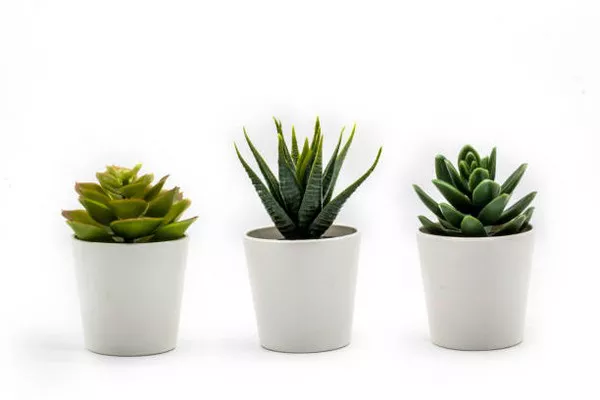Succulents and cacti often share the spotlight in the world of ornamental plants, celebrated for their resilience, unique appearances, and minimal care requirements. However, it’s important to note that not all succulents belong to the cactus family. In this comprehensive guide, we delve into the intriguing realm of non-cacti succulents, shedding light on their diversity, characteristics, and the captivating beauty they bring to gardens and indoor spaces.
Defining Non-Cacti Succulents
Succulents are plants that have evolved to store water in their leaves, stems, or roots as an adaptation to survive in arid environments. This storage allows them to endure prolonged periods of drought and thrive in conditions where water is scarce.
While all cacti are succulents, not all succulents are cacti. The primary distinction lies in the presence of areoles—specialized structures that give rise to spines, branches, or flowers. Cacti are defined by the presence of areoles, which are absent in non-cacti succulents.
Exploring the Diversity of Non-Cacti Succulents
1. Echeveria
Echeverias are perhaps some of the most recognizable non-cacti succulents. With their rosette-shaped growth habit and stunning array of colors, they are popular choices for container gardening, rock gardens, and succulent arrangements. Echeverias are known for their striking architectural form, making them a favorite among succulent enthusiasts.
2. Aloe
Aloe plants are renowned for their soothing gel, which is commonly used for its medicinal properties. These non-cacti succulents often feature spiky, lance-like leaves that arise from a central point. Aloe plants come in various sizes and shapes, making them versatile additions to gardens and indoor spaces.
3. Sedum
Sedums, also known as stonecrops, encompass a vast and diverse group of non-cacti succulents. From low-growing ground covers to tall, dramatic specimens, sedums offer a wide range of options for landscaping and gardening projects. Their ability to thrive in challenging conditions, combined with their attractive foliage and occasional flowers, makes them popular choices for various settings.
4. Haworthia
Haworthias are characterized by their compact rosette form and often intricate patterns on their leaves. These non-cacti succulents are well-suited for indoor cultivation, as they tolerate lower light conditions and are relatively slow-growing. Haworthias come in numerous varieties, each with its own unique leaf shapes and designs.
5. Crassula
The Crassula genus includes a diverse array of non-cacti succulents, each with its own charm. Jade plants, a type of Crassula, are widely recognized for their thick, coin-shaped leaves and are often associated with good luck and prosperity. Other Crassula species feature various leaf shapes, sizes, and colors, adding visual interest to succulent collections.
Cultivation and Care of Non-Cacti Succulents
1. Light Requirements
Like their cactus counterparts, non-cacti succulents thrive in bright, indirect sunlight. However, some varieties are more adaptable to lower light conditions, making them suitable for indoor environments with limited light exposure.
2. Watering Practices
While non-cacti succulents are water-wise, their specific watering needs can vary. Generally, allow the top inch of soil to dry out before watering. Be cautious not to overwater, as excessive moisture can lead to root rot.
3. Soil and Potting
Non-cacti succulents require well-draining soil mixes similar to those used for cacti. These mixes typically include components like coarse sand, perlite, and organic matter. When potting, choose containers with drainage holes to prevent waterlogging.
4. Temperature Tolerance
Most non-cacti succulents prefer temperatures between 60 to 80 degrees Fahrenheit (15 to 27 degrees Celsius). However, some varieties can tolerate slightly cooler temperatures, while others are more sensitive to frost and should be protected during colder months.
5. Pest and Disease Management
While non-cacti succulents are generally hardy, they can still be susceptible to pests such as mealybugs and aphids. Regular inspection and early intervention can help prevent infestations. Ensure good air circulation and avoid overcrowding to reduce the risk of fungal diseases.
Incorporating Non-Cacti Succulents into Design
1. Landscape and Garden Settings: Non-cacti succulents offer endless possibilities for landscape design. From ground covers that create lush textures to focal point specimens that command attention, these succulents can be integrated into rock gardens, borders, and xeriscapes with impressive results.
2. Container Gardens: Non-cacti succulents are perfect candidates for container gardening, both indoors and outdoors. Their diverse colors and forms allow for endless creative combinations, from monochromatic arrangements to eclectic mixes of various succulent varieties.
3. Indoor Decor: The adaptability of non-cacti succulents to indoor conditions makes them excellent choices for home and office decor. From miniature arrangements on windowsills to larger potted specimens that become statement pieces, these succulents can enhance interior spaces with their natural beauty.
Conclusion
While cacti may dominate the spotlight when it comes to succulents, non-cacti succulents offer an equally captivating and diverse range of plants to explore. Their unique growth habits, foliage patterns, and colors contribute to the world of succulent gardening in meaningful ways. By understanding the distinction between cacti and non-cacti succulents, along with the care requirements of the latter, gardening enthusiasts can embark on a journey that embraces the rich diversity of these water-wise plants. Incorporating non-cacti succulents into landscapes, containers, and indoor spaces opens up a world of creative possibilities, allowing these plants to shine in their own right.


